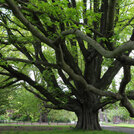Kouri, Christopher. Wait for the Bus: How Lowcountry School Site Selection and Design Deter Walking to School and Contribute to Urban Sprawl. A Report Prepared for the South Carolina Coastal Conservation League. Terry Sanford Institute of Public Policy, Duke University (November 1999). https://eric.ed.gov/?id=ED451681.
Fast Fact Library
Kuo, Frances E., William C. Sullivan, Rebekah Levine Coley, and Liesette Brunson. (1998). Fertile ground for community: Inner-city neighborhood common spaces. American Journal of Community Psychology, 26(6), 823-851.
Simpson, James R. (1998). Urban forest impacts on regional cooling and heating energy use: Sacramento County case study. Journal of Arboriculture, 24, 201-214.
Parsons, Russ, Louis G. Tassinary, Roger S. Ulrich, Michelle R. Hebl, and Michele Grossman-Alexander. (1998). The view from the road: Implications for stress recovery and immunization. Journal of Environmental Psychology 18(2), 113–140.
Simpson, James R., and E. Gregory McPherson. (1996). Potential of tree shade for reducing residential energy use in California. Journal of Arboriculture, 22(1), 10-18.
Marco Hüttenmoser. (1995). Children and their living surroundings: Empirical investigation into the significance of living surroundings for the everyday life and development of children. Children’s Environments, 12, 403–413.
Kaplan, Stephen. (1995). The restorative benefits of nature: Toward an integrative framework. Journal of Environmental Psychology. 15(3): 169-182.
McPherson, Gregory E., David J. Nowak, Rowan A. Rowntree. (1994). Chicago’s Urban Forest Ecosystem: Results of the Chicago Urban Forest Climate Project. USDA Forest Service Northeastern Forest Experiment Station General Technical Report NE-186, 63-81.
McPherson, E. Gregory, and Rowan A. Rowntree. (1993). Energy conservation potential of urban tree planting. Journal of Arboriculture 19(6), 321-331.
Mooney, Patrick. and P. Lenore Nicell. (1992). The Importance of Exterior Environment for Alzheimer Residents: Effective Care and Risk Management. Healthcare Management Forum 5, 2: 23-29.





